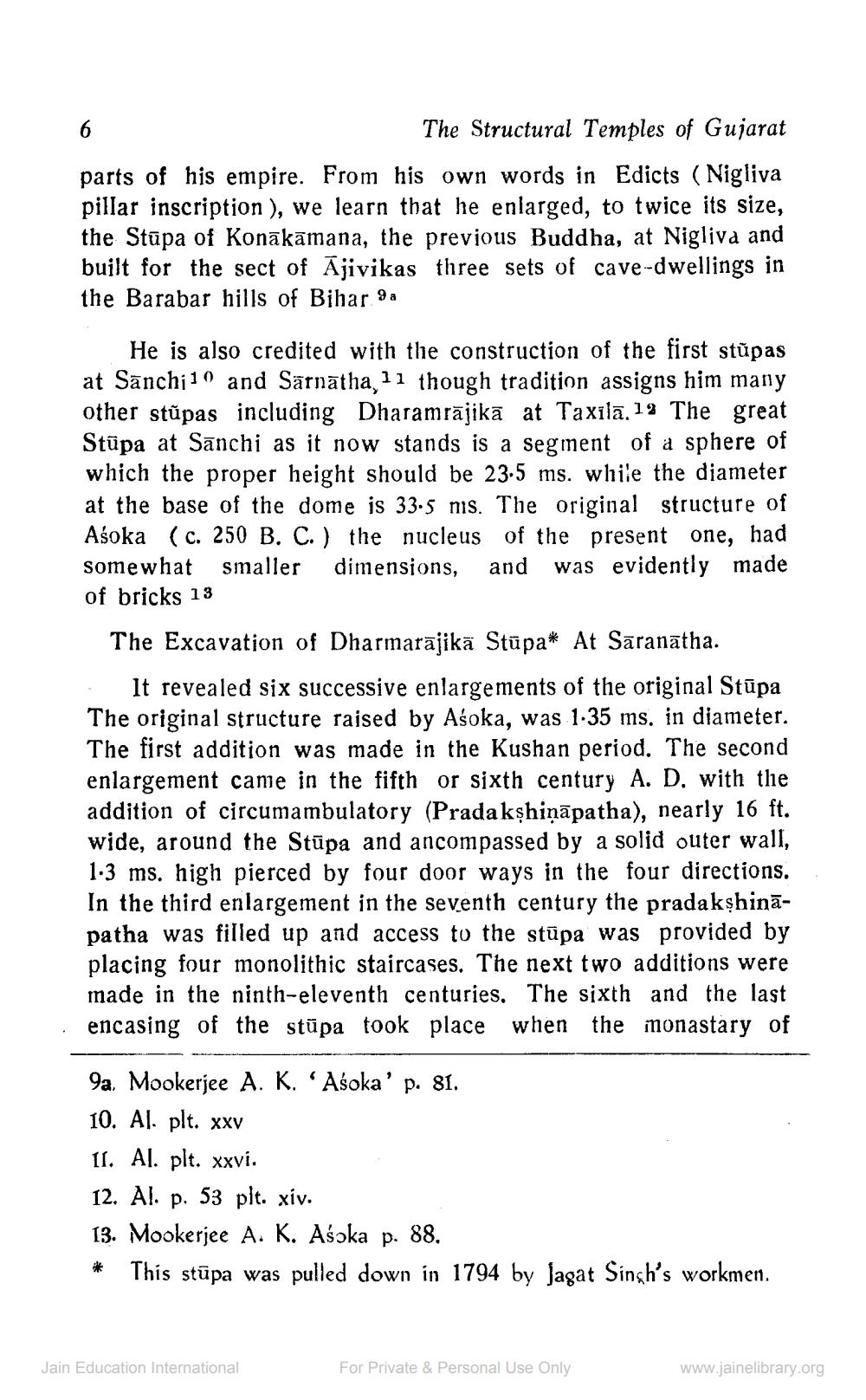________________
6
The Structural Temples of Gujarat
parts of his empire. From his own words in Edicts (Nigliva pillar inscription), we learn that he enlarged, to twice its size, the Stupa of Konakamana, the previous Buddha, at Nigliva and built for the sect of Ajivikas three sets of cave-dwellings in the Barabar hills of Bihar 9a
He is also credited with the construction of the first stupas at Sanchi and Sarnatha, 11 though tradition assigns him many other stupas including Dharamrajika at Taxila. 12 The great Stupa at Sanchi as it now stands is a segment of a sphere of which the proper height should be 23.5 ms. while the diameter at the base of the dome is 33.5 ms. The original structure of Aśoka (c. 250 B. C.) the nucleus of the present one, had somewhat smaller dimensions, and was evidently made of bricks 13
The Excavation of Dharmarajikā Stūpa* At Sāranātha.
It revealed six successive enlargements of the original Stupa The original structure raised by Aśoka, was 1.35 ms. in diameter. The first addition was made in the Kushan period. The second enlargement came in the fifth or sixth century A. D. with the addition of circumambulatory (Pradakṣhiņāpatha), nearly 16 ft. wide, around the Stupa and ancompassed by a solid outer wall, 1.3 ms. high pierced by four door ways in the four directions. In the third enlargement in the seventh century the pradakshinapatha was filled up and access to the stupa was provided by placing four monolithic staircases. The next two additions were made in the ninth-eleventh centuries. The sixth and the last encasing of the stupa took place when the monastary of
9a. Mookerjee A. K. 'Aśoka' p. 81.
10. Al. plt. xxv
II. Al. plt. xxvi.
12. Al. p. 53 plt. xiv.
13. Mookerjee A. K. Aśoka p. 88.
* This stupa was pulled down in 1794 by Jagat Singh's workmen.
Jain Education International
For Private & Personal Use Only
www.jainelibrary.org




